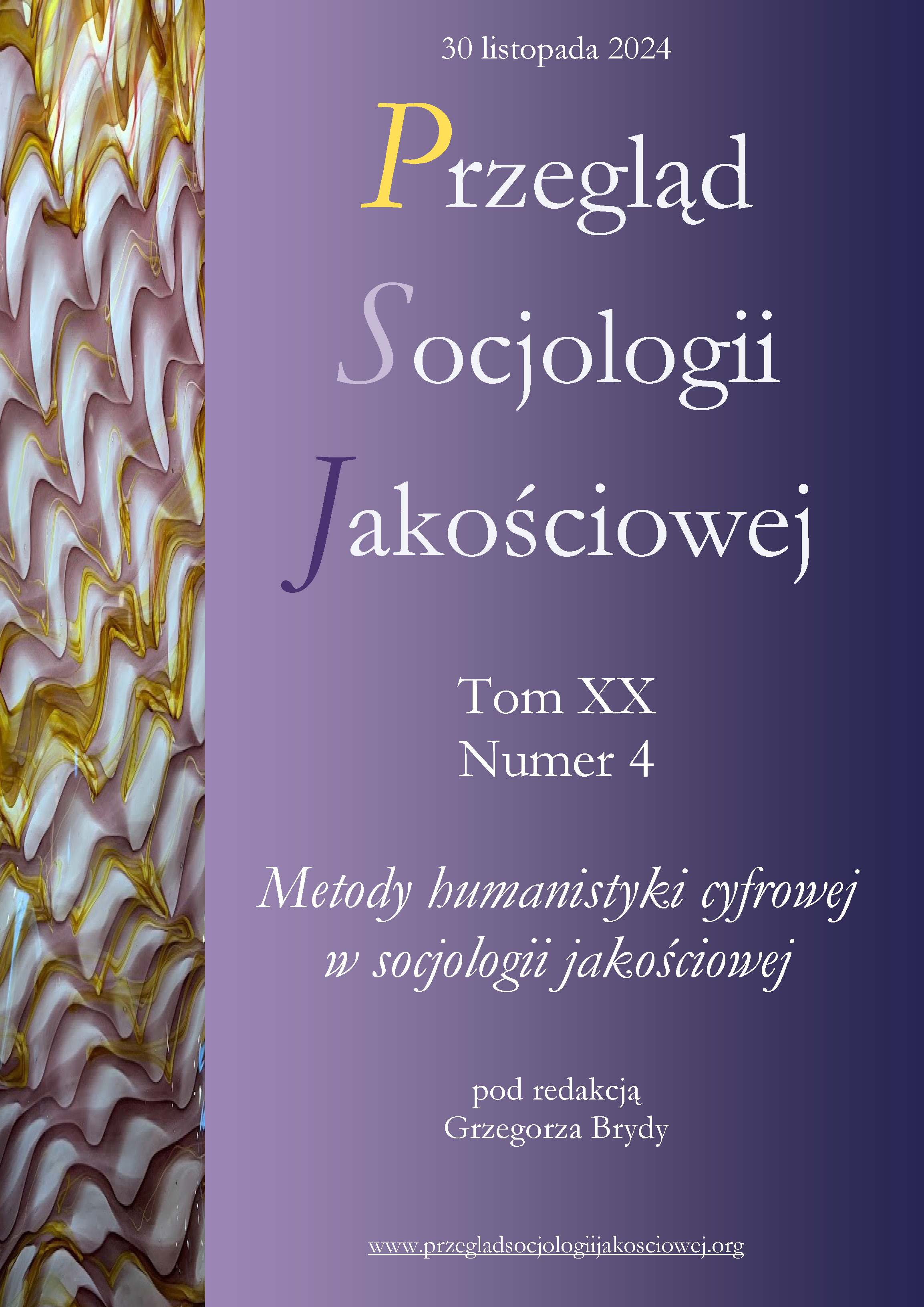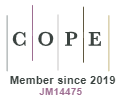The Longest Spring in History: On Interpreting the Transformations on the Polish-German Border on the Eve of Its Closure
DOI:
https://doi.org/10.18778/1733-8069.20.4.07Keywords:
bordering, Polish-German cooperation, interstices, socio-spatial changes, COVID-19Abstract
The article deals with the processes of debordering and rebordering on the Polish-German border, focusing on how the so-called everyday experts from the region interpreted these changes in 2018. The research was conducted in the cities of Słubice and Gubin and the adjacent rural areas, using individual structured in-depth interviews. The data analysis was inspired by grounded theory. According to the interviewees, cultural, legal, and economic differences significantly influenced the experiences and interactions at the border despite the blurring of physical borders. The analysis of the way of interpreting the debordering and rebordering also allows us to understand the characteristics of the narratives shaping the thinking about the transformations of the region at that time and their significance for integration processes and the creation of interstices. In the discussion, I argue for reorienting contemporary studies on the Polish-German border toward rebordering as well as for a more careful analysis of the accompanying narratives, emphasizing how these interpretations can condition the course of future events, such as what happened with the closing of borders in response to the COVID-19 pandemic.
Downloads
References
Asher Andrew D. (2012), Inventing a city: cultural citizenship in ‘Słubfurt’, “Social Identities: Journal for the Study of Race, Nation and Culture”, vol. 8(5), pp. 497–520, https://doi.org/10.1080/13504630.2012.667601
Google Scholar
DOI: https://doi.org/10.1080/13504630.2012.667601
Berger Peter, Luckmann Thomas (1983), Społeczne tworzenie rzeczywistości, translated by Józef Niżnik, Warszawa: Państwowy Instytut Wydawniczy.
Google Scholar
Brandariz José A., Fernández-Bessa Cristina (2021), Coronavirus and Immigration Detention in Europe: The Short Summer of Abolitionism?, “Social Sciences”, vol. 10(6), 226, https://doi.org/10.3390/socsci10060226
Google Scholar
DOI: https://doi.org/10.3390/socsci10060226
Christmann Gabriela B. (2010), Kommunikative Raumkonstruktionen als (Proto)Governance, [w:] Kilper Hiederose (ed.), Governance und Raum, Baden-Baden: Nomos, pp. 27–48.
Google Scholar
DOI: https://doi.org/10.5771/9783845226255-25
Dębicki Marcin, Doliński Wojciech (2013), Sympatia i „ciepła obojętność” jako kategorie analityczne stosunku zgorzelczan do mieszkańców Görlitz, „Opuscula Sociologica”, vol. 2, pp. 7–30.
Google Scholar
Dolińska Kamila, Makaro Julita (2020), O rodzeniu się wielokulturowości z transgraniczem w tle. Na przykładzie pandemii COVID-19 (i jej skutków) w miastach podzielonych, “Przegląd Zachodni”, vol. 4(377), pp. 225–244.
Google Scholar
Dolińska Kamila, Niedźwiecka-Iwańczak Natalia (2017), German Neighbours from Across the River – Insiders? Strangers? Others?, “Sociální studia/Social Studies”, vol. 14(1), pp. 94–116, https://doi.org/10.5817/SOC2017-1-95
Google Scholar
DOI: https://doi.org/10.5817/SOC2017-1-95
Dolińska Kamila, Makaro Julita, Niedźwiecka-Iwańczak Natalia (2018), Cud pogranicza? Zgorzelczanie, gubinianie i słubiczanie o życiu w miastach podzielonych, Warszawa: Nomos.
Google Scholar
Dolińska Kamila, Niedźwiecka-Iwańczak Natalia, Makaro Julita (2017), Divided towns in the Polish-German borderland in the perspective of the transborder processes (transnational/horizontal Europeanisation?) – opportunities and threats, [in:] Zbigniew Kurcz, Elżbieta Opiłowska, Jochen Roose (eds.), Advances in European Borderlands Studies, Wrocław: Nomos, pp. 211–238.
Google Scholar
DOI: https://doi.org/10.5771/9783845276892-211
Dołzbłasz Sylwia, Zelek Krzysztof (2019), Wybrane cechy zagospodarowania przestrzennego i aktywności gospodarczej w otoczeniu miejsc przekraczania granicy polsko-niemieckiej, “Przegląd Geograficzny”, vol. 91(4), pp. 487–510, https://doi.org/10.7163/PrzG.2019.4.3
Google Scholar
DOI: https://doi.org/10.7163/PrzG.2019.4.3
Eigmüller Monika (2006), Der duale Charakter der Grenze. Bedingungen einer aktuellen Grenztheorie, [in:] Monika Eigmüller, Georg Vobruba (eds.), Grenzsoziologie. Die politische Strukturierung des Raumes, Wiesbaden: VS Verlag für Sozialwissenschaften, pp. 55–74.
Google Scholar
DOI: https://doi.org/10.1007/978-3-531-90245-6_5
Frymark Kamil (2023), Germany: a major drop in the number of illegal migrants crossing the Polish border, Ośrodek Studiów Wschodnich, https://www.osw.waw.pl/en/publikacje/analyses/2023-11-28/germany-a-major-drop-number-illegal-migrants-crossing-polish-border [accessed: 10.03.2024].
Google Scholar
Galasiński Dariusz, Meinhof Ulrike H. (2002), Looking across the river: German-Polish border communities and the construction of the Other, “Identity Politics”, vol. 1(1), pp. 23–58, https://doi.org/10.1075/jlp.1.1.05gal
Google Scholar
DOI: https://doi.org/10.1075/jlp.1.1.05gal
Gibbs Graham (2011), Analizowanie danych jakościowych, translated by Maja Brzozowska-Brywczyńska, Warszawa: Wydawnictwo Naukowe PWN.
Google Scholar
Hennig Anja (2021), The spatial dimension of coronavirus crisis management and the role of subnational actors in the German-Polish border region, “European Societies”, vol. 23, pp. 859–871, https://doi.org/10.1080/14616696.2020.1846065
Google Scholar
DOI: https://doi.org/10.1080/14616696.2020.1846065
Herzog Lawrence A., Sohn Christophe (2019), The co-mingling of bordering dynamics in the San Diego–Tijuana cross-border metropolis, “Territory, Politics, Governance”, vol. 7(2), pp. 177–199, https://doi.org/10.1080/21622671.2017.1323003
Google Scholar
DOI: https://doi.org/10.1080/21622671.2017.1323003
Jańczak Jarosław (2018), Symmetries, asymmetries and cross-border cooperation on the German–Polish border. Towards a new model of (de)bordering, “Documents d’Anàlisi Geogràfica”, vol. 64(3), pp. 509–527, https://doi.org/10.5565/rev/dag.518
Google Scholar
DOI: https://doi.org/10.5565/rev/dag.518
Jańczak Jarosław (2020), Re-bordering in the EU under Covid-19 in the First Half of 2020: A Lesson for Northeast Asia?, “Eurasia Border Review”, vol. 11, pp. 2–16, https://doi.org/10.14943/ebr.11.2
Google Scholar
Keller Reiner (2013), Kommunikative Konstruktion und diskursive Konstruktion, [w:] Reiner Keller, Hubert Knoblauch, Jo Reichertz (eds.), Kommunikativer Konstruktivismus. Theoretische und empirische Arbeiten zu einem neuen wissenssoziologischen Ansatz, Wiesbaden: Springer, pp. 69–94.
Google Scholar
DOI: https://doi.org/10.1007/978-3-531-19797-5_4
Keller Reiner, Knoblauch Hubert, Reichertz Jo (eds.) (2013), Kommunikativer Konstruktivismus. Theoretische und empirische Arbeiten zu einem neuen wissenssoziologischen Ansatz, Wiesbaden: Springer.
Google Scholar
DOI: https://doi.org/10.1007/978-3-531-19797-5
Knoblauch Hubert (2017), Die kommunikative Konstruktion der Wirklichkeit, Wiesbaden: Springer.
Google Scholar
DOI: https://doi.org/10.1007/978-3-658-15218-5
Kolossov Vladimir, Scott James (2013), Selected conceptual issues in border studies, “Belgian Journal of Geography”, vol. 1, https://doi.org/10.4000/belgeo.10532
Google Scholar
DOI: https://doi.org/10.4000/belgeo.10532
Konrad Victor (2015), Toward a Theory of Borders in Motion, “Journal of Borderlands Studies”, vol. 30(1), pp. 1–17, https://doi.org/10.1080/08865655.2015.1008387
Google Scholar
DOI: https://doi.org/10.1080/08865655.2015.1008387
Kurzwelly Michael, Stefański Tomasz (2022), Nowa Amerika, Poznań: Galeria Miejska Arsenał.
Google Scholar
Löfgren Orvar (2008), Regionauts: the Transformation of Cross-Border Regions in Scandinavia, “European Urban and Regional Studies”, vol. 15(3), pp. 195–209, https://doi.org/10.1177/0969776408090418
Google Scholar
DOI: https://doi.org/10.1177/0969776408090418
Malinowski Piotr (2021), Przez Polskę do Niemiec. Czy uchodźcy będą odsyłani nad Wisłę?, “Krytyka Polityczna”, https://krytykapolityczna.pl/swiat/ue/malinowski-przez-polske-do-niemiec-czyuchodzcy-beda-odsylani-nad-wisle/ [accessed: 10.03.2024].
Google Scholar
Marody Mirosława (ed.) (2021), Wartości w działaniu, Warszawa: Scholar.
Google Scholar
McCall Cathal (2012), Debordering and Rebordering the United Kingdom, [in:] Thomas M. Wilson, Hastings Donnan (eds.), A Companion to Border Studies, Chichester: John Wiley & Sons, Ltd., pp. 214–229.
Google Scholar
DOI: https://doi.org/10.1002/9781118255223.ch12
Opiłowska Elżbieta (2020), The Covid-19 crisis: the end of a borderless Europe?, “European Societies”, vol. 23, pp. 589–600, https://doi.org/10.1080/14616696.2020.1833065
Google Scholar
DOI: https://doi.org/10.1080/14616696.2020.1833065
Opiłowska Elżbiera, Dolińska Kamila, Kajta Justyna, Makaro Julita, Niedźwiecka-Iwańczuk Natalia (2022), Narracje o miastach podzielonych w Europie Środkowej: Słubice i Frankfurt nad Odrą oraz Cieszyn i Český Těšín, Warszawa: Scholar.
Google Scholar
Pap Norbert, Reményi Péter (2017), Re-bordering of the Hungarian South: Geopolitics of the Hungarian border fence, “Hungarian Geographical Bulletin”, vol. 66(3), pp. 235–250.
Google Scholar
DOI: https://doi.org/10.15201/hungeobull.66.3.4
Pries Ludger (2007), Integration als Raumentwicklung – Soziale Räume als Identifikationsräume, [in:] Petra Deger, Robert Hettlage (eds.), Der europäische Raum. Die Konstruktion europäischer Grenzen, Wiesbaden: Springer, pp. 123–144.
Google Scholar
DOI: https://doi.org/10.1007/978-3-531-90246-3_7
Rogowski Łukasz, Frąckowiak Maciej (2023), COVID-19’S re-bordering impact on the identity of the Polish-German borderland from the perspective of Polish residents: the case of the twin cities of Słubice and Gubin, “Ruch Prawniczy, Ekonomiczny i Socjologiczny”, vol. LXXXV(3), pp. 119–143, https://doi.org/10.14746/rpeis.2023.85.3.09
Google Scholar
DOI: https://doi.org/10.14746/rpeis.2023.85.3.09
Roose Jochen (2010), Vergesellschaftung an Europas Binnengrenzen. Eine vergleichende Studie zu den Bedingungen sozialer Integration, Wiesbaden: Springer.
Google Scholar
DOI: https://doi.org/10.1007/978-3-531-92227-0
Sandberg Marie (2016), Restructuring locality: practice, identity and place-making on the German-Polish border, “Identities”, vol. 23(1), pp. 66–83, https://doi.org/10.1080/1070289X.2015.1016523
Google Scholar
DOI: https://doi.org/10.1080/1070289X.2015.1016523
Stokłosa Katarzyna (2014), The Border in the Narratives of the Inhabitants of the German-Polish Border Region, [in:] Katarzyna Stokłosa, Gerhard Besier (eds.), European Border Regions in Comparison, New York: Routledge, pp. 257–274.
Google Scholar
DOI: https://doi.org/10.4324/9781315815602
Strauss Anselm L., Corbin Juliet M. (1990), Basics of qualitative research: grounded theory procedures and techniques, Thousand Oaks: Sage Publictions.
Google Scholar
Więckowski Marek, Timothy Dallen J. (2021), Tourism and an evolving international boundary: Bordering, debordering and rebordering on Usedom Island, Poland-Germany, “Journal of Destination Marketing & Management”, vol. 22, 100647, https://doi.org/10.1016/j.jdmm.2021.100647
Google Scholar
DOI: https://doi.org/10.1016/j.jdmm.2021.100647
Wilson Dean, Weber Leanne (2008), Risk and Preemption on the Australian Border, “Surveillance and Society”, vol. 5, pp. 124–141.
Google Scholar
DOI: https://doi.org/10.24908/ss.v5i2.3431
Downloads
Published
Versions
- 2024-11-30 (2)
- 2024-11-30 (1)
How to Cite
Issue
Section
License

This work is licensed under a Creative Commons Attribution-NonCommercial-NoDerivatives 4.0 International License.
Funding data
-
Narodowe Centrum Nauki
Grant numbers MO-2016/23/G/HS6/04021














